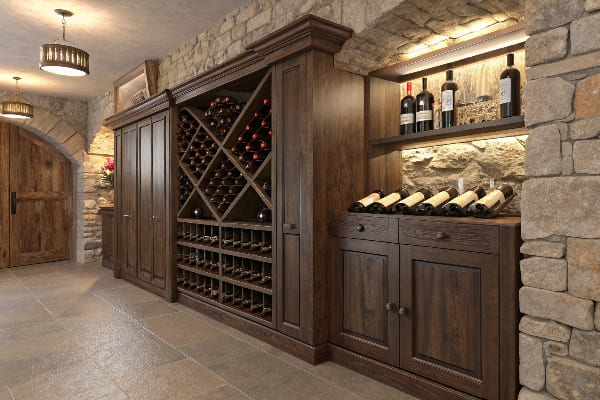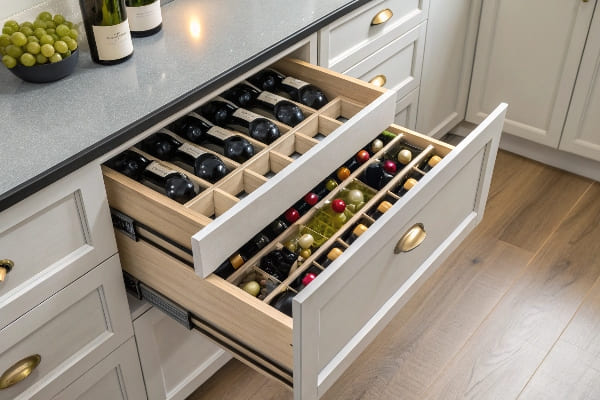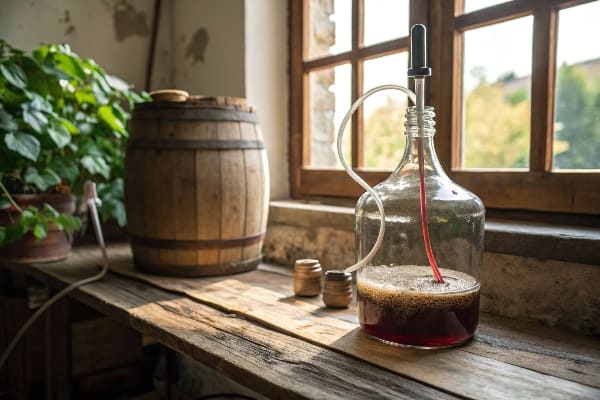I once crammed bottles in my kitchen cabinet until one rolled out and shattered; that shock pushed me to learn how to store wine right.
The best wine rack is a sturdy, vibration-free structure that holds bottles on their sides in a cool, dark spot, giving each label steady humidity and easy access.

That quick answer is useful, yet real confidence comes when you know why each part matters—keep reading and choose a rack that earns its place in your space.
What is the best material for a wine rack?
You buy a beautiful vintage, then worry the stand may buckle or taint the cork—that fear grows every time the room warms up.
Solid hardwood, powder-coated steel, or food-grade stainless steel stay stable, resist moisture, and avoid off-odors, making them the best materials for a wine rack.

Comparing common rack materials
Below I break down the three winners against popular but weaker choices. My first rack was flimsy pine; it warped within months. I learned the lesson, and you can skip that pain.
| Material | Strength | Moisture Resistance | Odor Risk | Average Lifespan |
|---|---|---|---|---|
| Hardwood (oak, mahogany)1 | High | Medium | Low | 20+ years |
| Powder-coated steel2 | Very high | High | Very low | 25+ years |
| Stainless steel 304/3163 | Very high | Very high | None | 30+ years |
| Softwood (pine, fir) | Low | Low | Medium | 5-10 years |
| MDF/Particle board | Low | Low | High | <5 years |
Why hardwood holds its own
Hardwood balances warmth and rigidity. It expands less than pine, so joints stay tight. I seal oak with food-safe oil; that slows swelling and keeps tannic smells away.
The case for metal
Steel racks shrug off damp basements. Choose powder coating over bare steel to stop rust, and always confirm weld seams are smooth, so labels never snag.
Stainless for harsh cellars
If your cellar runs near a coastal breeze or kitchens with steam, stainless pays for itself. It wipes clean, never cracks, and its neutral finish fits modern décor.
When you weigh cost against lifespan, hardwood and steel often tie. The best pick comes down to your style, but skip any board that flakes when scratched.
What is the most efficient way to store wine?
Your collection grows, floor space shrinks, and every square inch now counts. Bottles stack two deep, labels vanish, and you start buying repeats by mistake.
Storing bottles horizontally on easy-pull shelves arranged by style and age is the most efficient way to keep more wine visible, safe, and ready to grab.

Layout strategies that save space
When I upgraded my rack, efficiency meant cutting wasted air gaps and reducing the time spent hunting a Syrah in the dark.
1. Horizontal beats vertical
Corks stay moist, oxygen stays out, and rows can double in height without tipping risk.
2. Sliding shelves vs. fixed cubbies4
Sliding shelves cost a bit more, yet they let you stack deeper since the back row rolls forward. You view labels fast and avoid double handling.
| Storage Method | Bottle Density (per m²) | Retrieval Speed | Cork Health |
|---|---|---|---|
| Fixed cubbies | 80 | Medium | Good |
| Sliding shelves | 120 | Fast | Good |
| Diamond bins | 140 | Slow | Fair |
| Case stacking | 200 | Very slow | Poor |
3. Zone by drinking window5
I split my rack into “drink soon,” “age five years,” and “age ten years.” Simple color tags tell me which row to open on a busy night.
4. Temperature layering6
Warm air rises. Keep delicate whites low, bold reds up a shelf, and sparkling in the coolest spot. Add a silent fan if the room fluctuates more than 2 °C.
With a planned grid and pull-out rails, I boosted capacity by 30 % without adding a single square foot—worth every minute of sketching.
What makes a good wine rack?
A rack may look sleek online, yet screws loosen, joints creak, and vibrations from nearby appliances rattle your prized bottles.
A good wine rack is rigid, vibration-dampened, level, modular, and sized for standard 750 ml bottles while supporting larger formats in key spots.

Five pillars of rack quality
1. Rigidity
Loose joints invite wobble. I test by loading the top row first; a sound rack shows zero sway.
2. Vibration control7
Place felt pads under feet or mount to studs. In my home office, I use rubber spacers to block printer hum.
3. Level installation8
Even a 2 mm tilt strains corks. Use a bubble level and shim under each leg. Check again after the first seasonal humidity swing.
4. Modularity9
Collections evolve. Choose racks that stack or link side-by-side. Expansion saves time over selling and rebuying fixed pieces.
5. Magnum and odd size zones
A few wider cubbies guard champagne, port, or that lucky imperial stout. Without them, you risk forcing large bottles into tight slots and cracking labels.
| Feature | Why It Matters | Quick Test |
|---|---|---|
| Rigid frame | Stops bottle shift | Push side panel—does it flex? |
| Soft rests | Protects glass | Run finger under rail—any burrs? |
| Secure joinery | Holds weight | Lift corner—does rack twist? |
| Expandable | Grows with you | Look for alignment holes or clips |
| Finish quality | Prevents taint | Smell surface—any solvent odor? |
Invest once, and you avoid the hidden cost of spoiled wine and extra repairs.
What is the best way to rack wine?
The perfect rack sits ready, yet bottling day arrives and sediment clouds the wine—one slip, and the batch turns gritty.
The best way to rack wine is to siphon gently from the shoulder of the vessel, leaving sediment behind, into sanitized bottles, then store them horizontally in a stable rack.

Practical steps for clear, stable wine
Sanitization comes first
Spray everything—tubing, bottles, corks—with a no-rinse sanitizer10. Skipping this step ruined my second batch; never again.
Siphon height control
Place the carboy on a counter, the bottle crate on the floor. Use a clamp to stop the tube half an inch above the lees. Flow stays smooth, and gravity does the work.
Avoid splashing
Oxygen stales flavor. Keep the tube end below liquid level in the receiving bottle. A simple auto-siphon11 lowers hustle and lifts clarity.
| Step | Tool | Common Error | Fix |
|---|---|---|---|
| Clean | Star San spray12 | Missed crevices | Use soft brush |
| Transfer | Auto-siphon | Tube kinks | Warm tube in water |
| Fill | Bottle wand | Overfill | Pull wand sooner |
| Cork | Hand corker | Loose cork | Check spring tension |
Post-transfer rest
Let bottles stand upright for 24 hours so corks expand. After that, lay them on their sides in your chosen rack. The cork rehydrates, sealing tight.
Whether you craft Cabernet in a garage or buy bottles from a local shop, careful racking and smart storage keep every pour bright and honest.
Conclusion
Choose a rack built from strong, inert materials, plan horizontal space wisely, demand rigid construction, and rack your wine gently—your collection will thank you every time you pull a cork.
Discover the benefits of hardwood, including its strength and aesthetic appeal, making it a timeless option for racks. ↩
Explore the advantages of powder-coated steel, including its durability and moisture resistance, perfect for various environments. ↩
Learn why stainless steel 304/316 is a top choice for durability and cleanliness in challenging conditions. ↩
Explore this link to understand how sliding shelves can enhance your wine storage efficiency and retrieval speed. ↩
Discover effective zoning strategies for wine storage that can help you easily access your favorite bottles at the right time. ↩
Learn about the importance of temperature layering in wine storage to maintain optimal quality and flavor. ↩
Explore this link to discover various techniques for minimizing vibrations, ensuring a quieter and more productive workspace. ↩
This resource will guide you through the importance of level installation, helping you maintain the integrity of your items. ↩
Learn about the advantages of modular systems, which can adapt to your changing needs and save you time and money. ↩
Explore this link to understand the importance of no-rinse sanitizers in wine making and how they ensure quality and safety. ↩
Learn about the benefits of using an auto-siphon for smooth transfers and clarity in your wine making process. ↩
Discover how Star San spray can enhance your brewing sanitation process and prevent contamination. ↩

